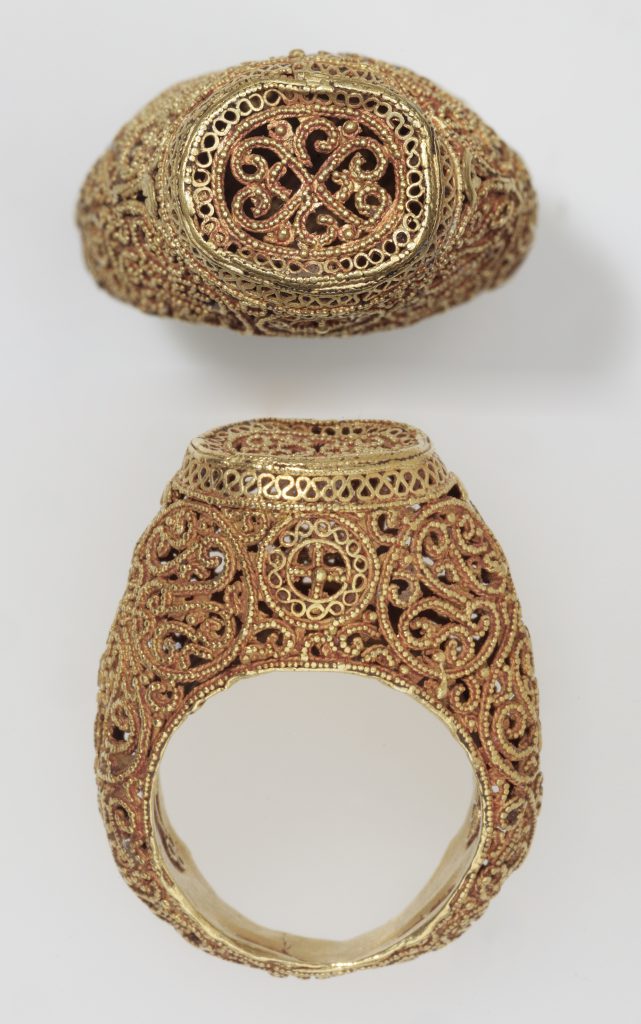



Title: Stirrup Ring
Date: 11th–12th century
Location: Fatimid Egypt or Syria
Materials: gold sheet, wire and granulation
Dimensions: 2.9 x 2.3 cm; weight 5.4g
Accession Number: JLY 1847
Other Notes:
This gold filigree ring is among the finest rings made in the Fatimid period. It was assembled from several prefabricated rope-and-grain components and has a liner of sheet gold. Although this type of construction was widespread in the Fatimid period, the workmanship of cthis ring is exceptional. The interior tie-bars that back the rope-and-grain filigree are almost imperceptible. Some wire ropes forming the skeleton appear to have been flattened slightly before the grains were attached: possibly paired ropes that had been pre-soldered were gently hammered over a metal former to even them up before they were combined with each other to make the ring. Further evidence of care taken to ensure the proper alignment of the parts is the presence of a short length of bent gold wire that would have held the two halves of the ring together during the soldering process. This level of attention extends even to the liner of the ring: it is decorated with applied rope filigree and rows of grains hide its seams.
The oval bezel sits on a band of figure-of-eight loops, which is bevelled so that it is flush with the line of the shoulders, a feature seen sometimes in other rings of this type. The top has a figure-of-eight border surrounding a geometric design of openwork rope-and-grain filigree. On each shoulder is an openwork cross within a figure-of-eight scroll border, set between ornate palmettes. Whether it was included as a specifically Christian symbol is uncertain, though its conspicuous position does suggest that its incorporation was deliberate.
Bibliography:
M. Wenzel, Ornament and Amulet. Rings of the Islamic Lands, The Nasser D. Khalili Collection of Islamic Art, volume XVI, London 1993, cat.141, pp.44, 52 and 206.
M. Spink and J. Ogden, The Art of Adornment. Jewellery of the Islamic World, Nasser D. Khalili Collection of Islamic Art, volume XVII, Part One, London 2013, cat.74, pp.154–5.
J.M. Rogers, The Arts of Islam. Masterpieces from the Khalili Collection, London 2010, cat.76, pp.82–3.
Zoom
Close

Create your own collection of artworks that you can print or save as a PDF. Please enter you email to enable feature.
Small Flask | JLY 1075
Has been added to your collection.
TIP:
You can now access and view your collection from the main menu at any time.